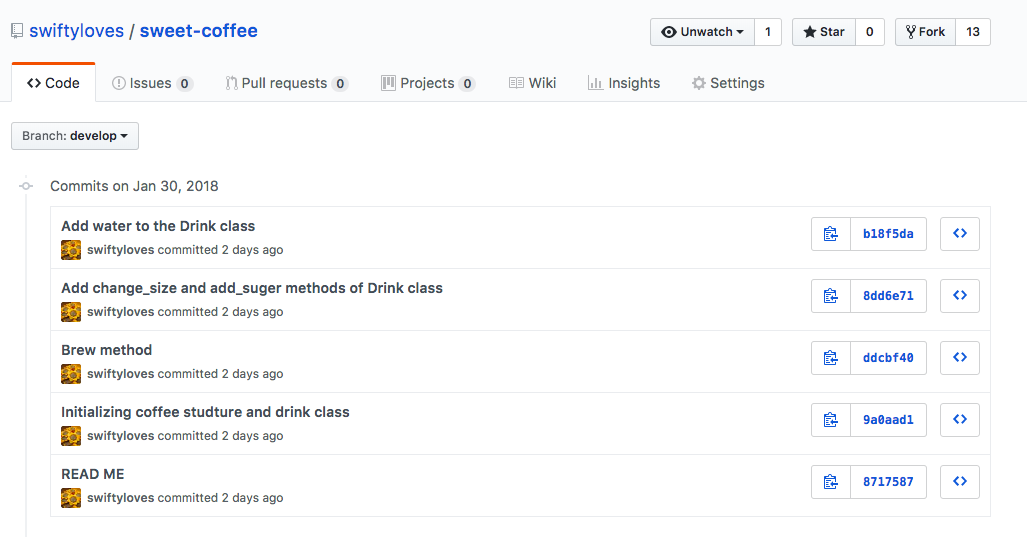SI 206 Homework 5: OAuth and Caching
Homework Objective: Know what is OAuth and how to use it Know how to look through API documentation and use it for making requests Know how to use caching
Supporting Material: Starter code provided in github repository: hw5_twitter.py secret_data.py (stores your credentials, don’t upload)
Documentation for Twitter API: https://developer.twitter.com/en/docs/tweets/timelines/api-reference/get-statuses-user_timeline.html
Goal: Create a program to analyze the twitter timeline of a selected user to list their most frequently used words (20pts)
FILENAME: hw5_twitter.py
ARGUMENTS: the program takes two arguments: a twitter username and the number of tweets to analyze. OUTPUT: the program outputs the following: the user name the number of tweets analyzed the five most frequent words that appear in the analyzed tweets
SAMPLE OUTPUT: mwnewman$ python3 hw5_twitter.py umsi 50 USER: umsi TWEETS ANALYZED: 50 5 MOST FREQUENT WORDS: umsi(8) being(3) is(3) improve(2) Join(2)
MAIN ASSIGNMENT: Part 1: Get user tweets (5 points) Step 1: Fetch 25 tweets from the UMSI twitter account (https://twitter.com/umsi) using the twitter API. Pass the twitter username and number of tweets as arguments to the program Example: $ python3 hw5_twitter.py umsi 25
Step 2: Now, write the json returned from the Twitter API to a file named tweet.json in a neatly formatted way (Tip: use json.dumps() with indent) Example: { "statuses": [ { "created_at": "Thu Feb 01 04:51:26 +0000 2018", "id": 958925736047386624, "id_str": "958925736047386624", "text": "RT @xyz: Example tweet content", "truncated": false, "entities": { "hashtags": [ { "text": "GoBlue", .......
Part 2: Analyse tweets using NLTK to find most common words(10 points) Take a moment to look through the json file you just created to get a sense of the data you are interacting with. Note: You will not be using tweet.json in further instructions. It’s for your reference only. Feel free to comment the section of code that writes to tweet.json
Step 1: We will now use the NLTK module. Documentation can be found here:http://www.nltk.org If you don’t have nltk installed, here are related instructions:http://www.nltk.org/install.html
Step 2: Gather tweet data from the response of twitter api. Once you have this, tokenize the words. You can find a nice example of tokenizing text on the homepage of NLTK under “Some simple things you can do with NLTK”
Step 3: Next, get a frequency distribution of the tokenized list. You can later use this to find the most frequent words.
Step 4: Ignore stop words (1) ignore any words that do not start with an alphabetic character [a-zA-Z], (2) ignore 'http', 'https', and 'RT' (these show up a lot in Twitter)
Step 4: Print the 5 most frequently used words using the frequency distribution you just created.
Part 3: Implement Caching (5 points) Let’s now add caching functionality to the above code. Caching helps reduce processing time and saves bandwidth costs (think of caching vs. fetching the same large volumes of data multiple times when the data hasn’t changed)
Step 1: Feel free to use the caching code used in class. Lets name the file "twitter_cache.json". In the cache, we are associating fullURL of the request with the response we receive from twitter for that URL.
Step 2: Verify that your code is picking up data from the cache when you repeat the same request (Ex: getting 25 tweets from the umsi account). Also verify that your code fetches data from twitter instead of the cache for new requests( try getting data for a different user account). You can do this by adding a line of code to the caching code block to print: “Fetching cached data...” when data is fetched from the cache.
Extra Credit 1 (2 pts) Twitter Boggle: Take two twitter accounts and analyze their tweets to find words they have in common and words that are unique to each account. Show the 5 most frequent different (unique) words for each account and the 5 most frequent common words (shared by both).
Extra Credit 2 (2 pts) Fetch 25 tweets from the UMSI twitter account (https://twitter.com/umsi) and print the 10 most commonly occurring “Basic Verbs”. Also, ignore all stop words.(https://pythonspot.com/nltk-stop-words/) Use NLTK for analyzing parts of speech. Use NLTK's default POS tagger and tagset (this will use the UPenn treebank tagset) a "verb" is anything that is tagged VB*
What to turn in:
- A link to your GitHub repository
- Screenshot of your github repository after the last push to github(example screenshot below)
- (Optional) a link to your GitHub repository for EC 1.
- (Optional) a link to your GitHub repository for EC 2.
Note: Be sure to commit everything (and push!) to your GitHub repo. At a minimum, your repo should include the following file, which you have modified: hw5_twitter.py
Do not upload secret.py ( this has your API key!). Use .gitignore (Was discussed and demoed in lecture 09)
Push your code before the deadline. Please don’t commit after the deadline or you might lose points if the latest commit is after the deadline.
All code must be executable. Any code that does not run in Python3 will be given a score of 0. You can receive partial credit for working programs.
Example screenshot attached.
